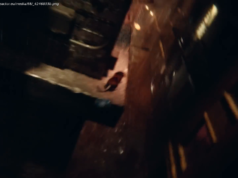An excellent port limited only by lack of scalability. There was a time when the chances of key PlayStation exclusives arriving on PC seemed slight – but…
An excellent port limited only by lack of scalability.
There was a time when the chances of key PlayStation exclusives arriving on PC seemed slight – but the situation has changed and the arrival of Death Stranding for PC does a phenomenal job of liberating a stunning game from the confines of its host platform. In the process, the game runs at 60 frames per second (and indeed beyond) – Kojima Productions’ original design target. But just how scalable is Death Stranding and what happens for 4K gamers when the PS4 Pro’s checkerboard rendering is stripped out in favour of native rendering and other solutions?
A PC game is often defined by its range of options and while there’s only a limited array of tweakables to play with, there’s still much of interest to discuss. For a start, HDR is supported – just make sure that the option is also enabled in Windows’ settings. The control over HDR is not as fine-grain as other titles on PC or indeed console, but it is great to see the feature here where other PC ports sometimes skip it. The good news here is that the implementation is just as stand-out as it is in PlayStation 4 Pro, and adds immensely to the quality of the presentation.
Not so impressive is the lack of camera field of view control. Generally, Death Stranding does have a much higher FOV than most console games so it is not a massive problem, but I can imagine some players feeling its absence and not being particularly happy about it. It’s this kind of detail – or lack of it – that gives me the sense that Kojima Productions has an iron grip on artistic control for Death Stranding at the expense of flexibility for the user.
Along with being able to choose aspect ratio, there’s resolution control – but it’s delivered in a very limited fashion. The game only supports a certain list of resolutions that it deems OK for the user with any more oddball or custom resolutions not being available in the menu, while attempts to force them via the config.cfg file yield no positive results. With that in mind, if you want to try out something like 3200×1800 or 2880×1620 or any other non-standard resolution, it simply won’t work. On my 4K monitor I could only use 4K, 1440p, 1080p and 720p essentially. Also when choosing resolution you are not given separate control over your refresh rate, so like many DirectX 12 and Vulkan apps, there is not a ‘real’ exclusive full-screen mode available. To use different refresh rates, your desktop refresh rate needs to be set and then the game automatically uses that frequency. This is really not great – high frame-rate monitors are so important now that I genuinely feel refresh rate control should be baked into a PC options menu just as resolution adjustment is.
Our detailed technology review of the PC version of Death Stranding.
The game’s frame-rate limiter is intriguing – and you can choose anything from 30fps to 60fps all the way up to 240fps. Increased performance is the aspect of the game that Kojima Productions is most interested in and it’s easy to see why. Death Stranding just looks so much better than the console version and feels more responsive to play. For this review I was switching back and forth between PS4 Pro and a PC running at 60fps to do some of the graphics comparison work and it felt so much tighter to control and more visually responsive. At above 60fps, Death Stranding moves into sublime territory where the animation work in gameplay looks absolutely fantastic, thanks in some small part to Decima’s brilliant per-object motion blur implementation. The only disappointment? Cutscenes are locked to 60fps, though occasional bugs saw them run higher – or indeed lower at 30fps.
In terms of other graphics options (and by extension, scalability) there’s not much here. There’s shadow resolution, texture streaming size, model quality and then the ability to turn off depth of field, screen-space ambient occlusion or motion blur. Beyond this, there’s the ability to turn off all anti-aliasing or to use FXAA or the standard TAA.
Home
United States
USA — software Death Stranding PC tech review – the upgrade we've been waiting for






